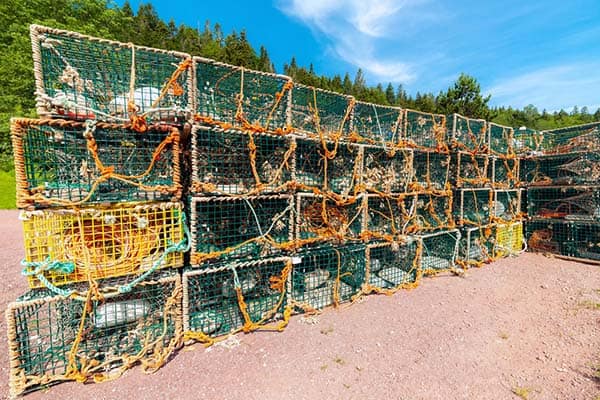Updated Market Research Analysis in Canada
Our research into the Canadian fisheries and regulations uncovered a massive ROI case for our products in the Canadian market, drastically improving the company’s outlook.
As Resqunit now has a good foothold with an active distributor covering most of the Canadian fishing industry, and as part of an ongoing update of the company’s investor presentation, we are releasing this important updated analysis of the Canadian markets. Business model around data harvesting will be announced at a later stage.
Canada is one of the leading nations in crustacean fisheries in the world, landing more than 200,000 tons of crab/lobster per year. With the current prices this is a $5 billion dollar industry. We estimate there being around 4 million active traps involved in this industry in Canada.
Loss of fishing gear is one of the biggest threats to both the industry and biodiversity in the Canadian oceans, and the DFO (Department of Fisheries and Ocean) has implemented regulations to incentivize the fishermen to reduce gear loss by using gear tags.

A typical Canadian fisherman has a license to fish with 250 pots. A license holder then gets 250 government issued tags. These tags are attached to each trap. Upon a gear loss of 25 traps (10% is the annual average), a license holder can’t easily replace the lost traps with 25 new ones. The license holder is now fishing with 25 traps less for the rest of the season, or until replacement tags are issued. The average annual revenue per trap is $1000 dollars, and a lost trap represents lost revenue, or decreased Catch Per Unit Effort (CPUE) (1). This loss of revenue adds on to the value of the trap, rope, and buoy.
A typical license holder will, due to gear loss, face annual costs of up to:
$25,000 dollars in lost revenue or reduced CPUE
$6,000 dollars replacement costs for lost gear
Total of $31,000 dollars. Our product will ensure quick recovery of lost traps, so the fishermen can continue fishing with full force. With a 5-year lifespan the solution has an annual cost of $15 – 25 per year per trap depending on product configuration. For the typical license holder of 250 pots this will amount to a cost of $3,750 – $6,250 dollars per year.
ROI factor of 5x – 8x
We estimate a total addressable market of 4 million Resqunit devices in Canada.
In hardware sales alone and with a product lifespan of 5 years, we see the potential of revenue figures between $60 – $100 million CAD (460 MSEK – 760 MSEK) in the Canadian market.
References and sources
(1) CPUE – Catch per unit effort is the resources spent per unit catch, e.g. manpower, fuel cost, insurance, wear and tear, maintenance cost etc.
Data from the following studies and resources have been used to derive at the conclusions above:
“Seafisheries landed quantity by province, 2018” – “Ghost fishing by Lost Fishing gear. Final report to DG Fisheries and Maritime Affairs of the European Commission”, “The Dilemma of Derelict Gear, Scientific reports 6:19671, January 2016” – “Effects of ghost fishing lobster traps in the Florida Keys, ICES Journal of Marine Science (2015)” – “Global Ecological, Social and Economic Impacts of Marine Plastic”, Nicola J. Beaumont – https://stats.oecd.org/